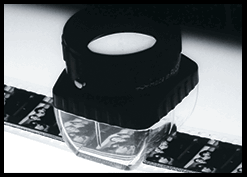Sarah Vaughan – USPS First-Day-of-Issue Forever Stamp Ceremony March 29th at The Newark Symphony Hall, Newark, NJ
/In 2014, Gartenberg Media Enterprises was engaged on an exclusive basis by the Estate of Hugh Bell to manage the collection of Hugh Bell’s photographs and to further the artist’s legacy. We are therefore proud to announce the featuring of one of Hugh Bell's iconic photographs of Sarah Vaughan on a USPS Commemorative Forever Stamp. The United States Postal Service is hosting a First-Day-of-Issue Stamp Ceremony for the release of the Sarah Vaughan Commemorative Forever Stamp at the Sarah Vaughan Concert Hall at Newark Symphony Hall in Newark, New Jersey on March 29th, 11am.
Above: Sarah Vaughan (Hugh Bell, 1955) and the Sarah Vaughan 2016 USPS Commemorative Forever Stamp
From The USPS Website:
"Sarah Vaughan was one of America’s greatest singers, successful in both jazz and pop, with a talent for improvisation and skillful phrasing and a voice that ranged over several octaves.
The stamp art is an oil painting of Vaughan in performance based on a 1955 photograph by Hugh Bell. A few lines of selvage text explain her importance as a Music Icon. The cover side of the pane features a larger version of the stamp art, a list of some of Vaughan’s popular songs, and the Music Icons logo. Bart Forbes was the artist and Ethel Kessler was the art director. The 11 a.m. First-Day-of-Issue dedication ceremony will take place March 29 in Newark, NJ, at the Sarah Vaughan Concert Hall."
Hugh Bell Biography:
Hugh Cecil Bell was born in 1927 in Harlem, New York City to parents from the Caribbean island of St. Lucia. As a young man he first attended City College, and then graduated in 1952 with a degree in Journalism and Cinematic Art from NYU. After NYU, Bell put his Film Degree to use and found work as a cameraman for television commercials.
Early in his career, Bell was befriended by the cinema verité pioneer, Richard Leacock, who was interested in helping minorities find a professional footing. Bell assisted Leacock on the shooting of several documentaries, including “Jazz Dance” (1952). He also accompanied Leacock on several trips to Spain, where Bell met and photographed the world-famous Spanish bullfighter, Dominguin, as well as Lauren Bacall and Ernest Hemingway. Bell’s friendship with Leacock continued to deepen, and over the ensuing decades, he photographed the Leacock family in an extended series of candid portraits at their family home.
In 1952, Bell shot his first of many legendary photographs of jazz greats,“Hot Jazz”. In 1955, Edward Steichen selected “Hot Jazz” for the groundbreaking exhibition “The Family of Man” at The Museum of Modern Art. Over 2 million photos were submitted and only 503 were selected. The exhibit showcased work from 273 photographers including Dorothea Lange, Edward Weston and Irving Penn. This was the first instance of Hugh Bell’s photographic work being shown alongside these towering figures of modern photography.
During the 1950’s, Hugh Bell frequented all the top Jazz clubs in New York City such as the Village Gate, the Open Door Café and Circle in the Square. He encountered and photographed many legendary musicians, including Billie Holiday, Dizzy Gillespie, Charlie Parker, Duke Ellington, Louis Armstrong, and Sarah Vaughan. Bell’s lifelong passion for taking Jazz photographs, often referred to as his “Jazz Giants” series, has been published in books and magazines. His jazz photographs have also graced the covers of innumerable vinyl jazz records.
In addition to jazz clubs, Bell went to and photographed local boxing matches, dance performances and legitimate plays, including Jean Genet’s “The Blacks,” a seminal theatrical production starring James Earl Jones, Roscoe Lee Brown, Cicely Tyson, Maya Angelou, and Godfrey Cambridge, that was mounted at the St. Mark’s Playhouse in 1961.
Bell opened his own studio in Manhattan in the 1960’s. Over the course of the ensuing decades, he worked as a commercial photographer. He produced photographs for print advertisements; many of which were targeted specifically to the Black community.
Interspersed with his commercial work, Bell also focused on portraiture. During this period, he is most known for his images of the female figure. In 1970, a series of these portraits were published in Avant Garde magazine in a feature entitled, “Bell’s Belles”. Throughout this period, he also traveled to the West Indies, focusing on the region of his geographical heritage. He photographed carnivals in Trinidad and Haiti, and daily life in Antigua. He also traveled to Brazil, where he took photographs of the local citizenry.
Hugh Bell passed away on October 31, 2012. He left behind an extensive and wide-ranging photographic legacy that is now ready for rediscovery.
For more information about the Hugh Bell archive and his photographs, please contact:
info@gartenbergmedia.com


